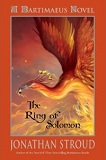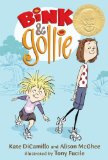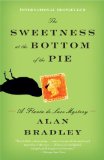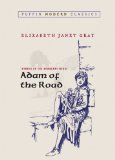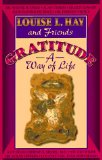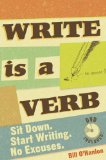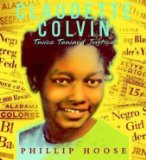Review of The Ring of Solomon, by Jonathan Stroud
A Bartimaeus Novel
by Jonathan Stroud
Disney Hyperion Books, New York, 2010. 398 pages.
Starred Review
Winner of the 2011 School Library Journal Battle of the Kids’ Books
In honor of the completion of the 2011 School Library Journal Battle of the Kids’ Books, I thought it would be fun to post my reviews of the books in the competition which I hadn’t yet reviewed, and to feature excerpts from the judges’ brilliant commentary. It’s only fitting to begin with this year’s winner, The Ring of Solomon.
The Ring of Solomon is a stand-alone novel, but it uses the incredible, snarky, powerful, irreverent, infuriating, and footnote-writing djinni, Bartimaeus, from the Bartimaeus Trilogy. The book is truly independent, so you could read it before or after the trilogy. Really, it’s quite brilliant of the author to do this. When you have an unforgettable character who’s a djinni who’s thousands of years old and boasts about his time with Solomon, why not give us a picture of what happened at that time? The only thing the two sets of books have in common is the character of Bartimaeus (and I think another demon or two), and the alternate reality where magicians do works of power by binding demons to their will.
Solomon has a ring with a spirit attached to it that is so powerful, no one can stand against him. Of course, it is with the power of the ring that he gained his amazing wealth and carried out his magnificent building projects.
Bartimaeus starts out in the employ of one of Solomon’s under-magicians, but then comes under the power of Asmira, a dedicated girl assassin sent by the Queen of Sheba to assassinate Solomon and steal his ring — a suicide mission, as far as Bartimaeus is concerned.
When I read this book, I was as delighted as I expected to be. Brilliant writing, hilarious footnotes, and knuckle-clenching dangerous adventure. I liked it that the happy ending was not for the young girl to become another of Solomon’s wives. (I don’t think that’s a spoiler.) Now, there wasn’t as much emotional depth as in The Bartimaeus Trilogy. But that was a much longer work, a trilogy, and a work of towering genius that builds over the course of the three books. This book definitely kept me reading late into the night, had me laughing, and also very tense. It didn’t make me cry, as I’m quite sure The Bartimaeus Trilogy did, but it’s still a brilliantly plotted, wonderfully entertaining book.
But you don’t have to take my word for it! In School Library Journal’s Battle of the Kids’ Books, all four judges who were offered a choice between The Ring of Solomon and another excellent children’s book chose The Ring of Solomon. Below are excerpts from their explanations of their choice:
The first round judge, Adam Rex, called The Ring of Solomon “a rollicking fantasy about a waggish djinni who becomes unwittingly embroiled in plots to steal a ring of unfathomable power.” He says, with footnotes, “Stroud has crafted what you might claim on one hand to be an old-fashioned save-the-world adventure, complete with the requisite all-powerful MacGuffin and a real mustache twirler of a villain or two. He’s also made something that’s fresh and modern–modern in its sense of humor, modern in its irreverence. Okay, maybe irreverence isn’t all that modern, but it always feels like it is. Doesn’t every generation think they invented it?” He also says, ” Every chapter left me wanting more–if Stroud and I were in a Scheherazade/King Shahry?r situation I totally would not have killed him at any point.”
In the second round, judge Patricia Reilly Giff was confronted with a choice between a graphic novel retelling of The Odyssey vs. The Ring of Solomon. She describes the book as ” inventive, action packed and hysterically funny.” One of the factors that led her to choose The Ring of Solomon as the winner was that she “had to stay up at night to keep reading, just to see what Stroud had in store, those twists and turns that kept me guessing until the end.”
In the third round, Karen Cushman freely admitted, “I am not a big reader or a big fan of fantasy novels. When I saw early on that A Tale Dark and Grimm and The Ring were both in my bracket, I anticipated I would have an easy time eliminating them. This just goes to show you how much I know. And now I publicly shed my credentials as a thoughtful, caring, mature person and reveal my snarky, ironic underbelly.
“Woo hoo! The Ring of Solomon! I was gobsmacked. What a book!”
Karen Cushman goes on to eloquently point out the powerful themes that show up in this book, underneath the snarky humor and gripping adventure:
” I found it exuberantly plotted, with evocative descriptions, terrific language, and intriguing
characters, both human and otherwise.
“I loved the distinctive voice of the rude, irreverent, sarcastic, resourceful, and surprisingly lovable Bartimaeus. Sure, djinni eat people but still I felt great pity and compassion for his deep longing for home and hatred of his enslavement.
“The book is wonderfully funny but had wise things to say about slavery and freedom, mindless obedience, and dying for empty concepts. Asmira, the teenaged Sheban sent on a suicide mission, is a true believer to a fault. Wise Solomon tells her, “I’m not your master…try not to need one.” And Bartimaeus says, “I know I’m enslaved…That gives me just a shadowy slice of freedom.” As Jonathan Stroud tells it, the issues of 950 BCE are the same we face today–the dangers of terrorism, fanaticism, and zealotry, and the price of power.”
Finally, in the Big Kahuna Round, Richard Peck was faced with three outstanding fantasy titles, Keeper, A Conspiracy of Kings, and The Ring of Solomon. His explanation of the charms of The Ring of Solomon is truly eloquent:
“Even the viewpoint flits. At moments when Bartimaeus is stuck in a bottle or some other tight corner, the spotlight falls on Asmira, a mortal maiden capable of mayhem (and acrobatics), sent by the sour Queen of Sheba to murder the King and steal his empowering Ring.
“‘Steal the Ring? Kill Solomon?’” says Bartimaeus. “‘…I might as well eat myself feetfirst, or put my head under the bottom of a squatting elephant. At least those options would be entertaining to watch.’”
“But of course this odd couple won’t become thieving assassins. They will in fact find the sudden self-knowledge we expect in books for the young. But their epiphanies are gussied up beyond reason by wordplay and action/adventure, and more special effects than Avatar and Rango put together, all in full color.”
He sums up his decision:
“You could have fooled me. I didn’t expect I’d pick as winner four-hundred pages of magic fantasy with Biblical allusions and a footnote on the Songs of Solomon. But I do.
“Because its very length and the wit of its diction are stinging retorts to both the grade-level textbook and Facebook.
“And because the fun is in how the tale is told, the yarn spun. Jonathan Stroud doesn’t control language; he unleashes it. The real magic here is in the turning phrase, and how much our texting young need that, and the liberation of laughter.”
Find this review on Sonderbooks at: www.sonderbooks.com/Teens/ring_of_solomon.html
Disclosure: I am an Amazon Affiliate, and will earn a small percentage if you order a book on Amazon after clicking through from my site.
Source: This review is based on a library book from the Fairfax County Public Library.
